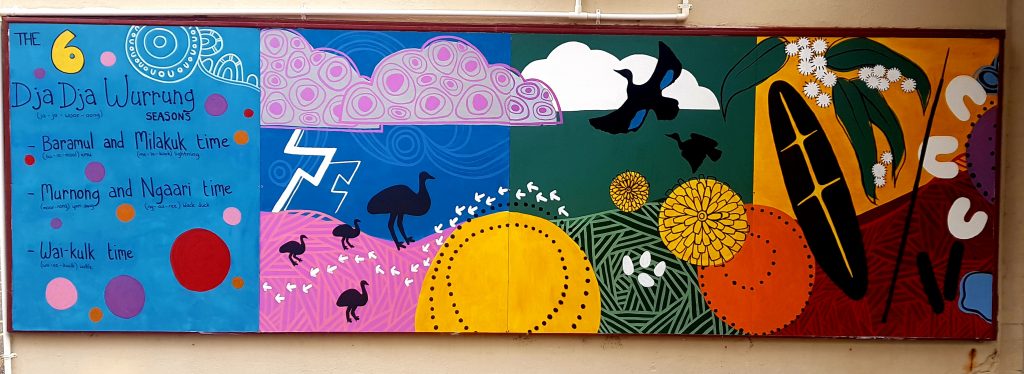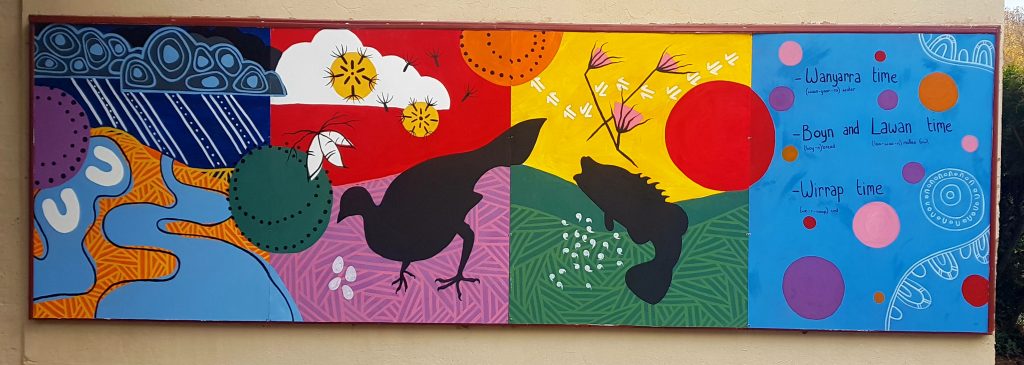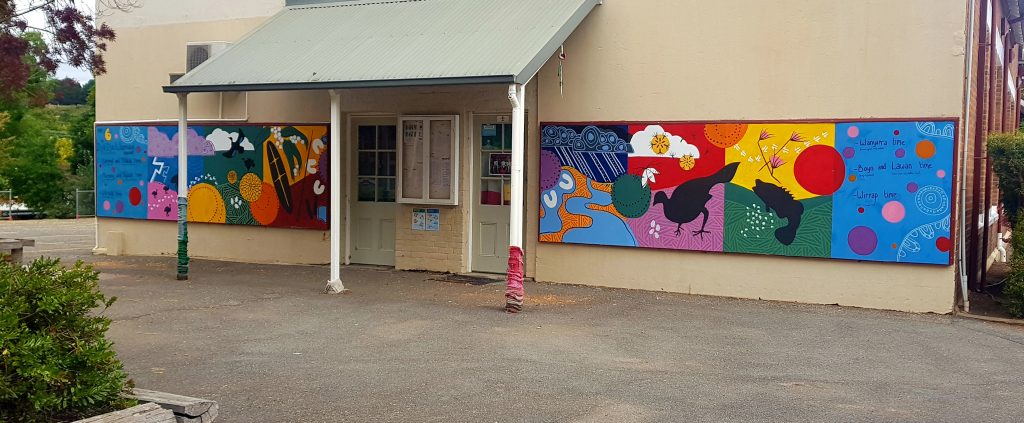Greetings to all our Daylesford, Drummond and Yandoit communities
Our school is very proud of our connections we have formed with groups and organisations within our community and the support that we get from them is enormous. On this page we would like to recognize that support. As you can see from the growing list below, the breadth of our partnerships is quite extensive and varied .
We will include links and information so that it provides a really clear and full picture of how linked a community we are.
The Bendigo Bank provided us with a grant to purchase all our robotics and coding equipment. We feature in the following video-
We are thrilled to have installed Natasha Carter’s vibrant mural on the main school building. Natasha is a Dja Dja Wurrung artist and her design is focused on the main six seasons on Djandak (Dja Dja Wurrung for Country). Funded by Hepburn Shire Council, Rotary and the school, an event to celebrate the mural will be held in Term 2. Thank you Natasha for creating such a beautiful mural and sharing Dja Dja Wurrung culture with our school community!
Each of these seasons are depicted by a panel:
– Barramul and milakuk time (emu and lightning)
– Murnon and ngaari time (yam daisy and black duck)
– Datim-datim and waikulk time (boomerang and
wattle)
– Wanyarra and gurri time (water and kangaroo)
– Boyn and lawan time (bread and mallee fowl)
– Giranul and wirrap time (perch and cod)
Natasha has provided the following information about her work.
“While Dja Dja Wurrung seasons follow a set order, unlike the four Western seasons, the date and the length of time can sometimes change. For this reason, it is very important to watch and listen to the environment around you and look for the signs. As an example of these changes, certain gumtrees will shed their bark, and this is a sign that it is time to abstain from fishing as the fish are now spawning, or when mallee fowl have created their nests it is the right time to harvest seed to make flour for bread or the yam tubers from murnong.
My artistic style consists of contrasting vibrant colours with large elements of patterns and line work specific to my people, the Djaara (VIC) and the Jaru (WA). As this mural is on Djandak, I will only draw on my Dja Dja Wurrung heritage.
I have included the Dja Dja Wurrung names so that everyone now and into the future has a chance to learn our language. In this regard I ask for understanding that we do not currently have the Dja Dja Wurrung words for all the animals and plants, yet.”



|
|
|